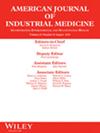The Effects of Body Cooling Strategies on Physiological and Performance Outcomes During Simulated Occupational Work in the Heat
Abstract
Background
Body cooling is a low-cost heat strain mitigation strategy to effectively reduce heat strain and enhance work performance. However, data on the efficacy of body cooling strategies remains limited. We aimed to examine the effects of body cooling with cooling garments on physiological, perceptual, and performance outcomes during simulated work in the heat in men and women.
Methods
Fourteen physically active participants (seven men and seven women; age: 26 ± 3 years, peak oxygen consumption [VO2peak]: 42.7 ± 7.9 mL kg−1 min−1) completed two randomized control trials in a hot, humid environment (40°C, 40% relative humidity). During the body cooling trial (COOL), participants wore cooling garments (hat, sleeves, neck gaiter), and large cooling towels during rest breaks. There was no cooling intervention in the control trial (CON). Rectal temperature (TREC), skin temperature (TSK), and heart rate (HR) were measured continuously. Performance outcomes included the number of boxes lifted during the trial (BOX) and the time to complete 25 repetitions (TT25) post-trial.
Results
There was a significant interaction between trial and activity with COOL reporting overall lower TREC (CON: 38.40 ± 0.46°C; COOL: 38.08 ± 0.31°C; p < 0.001), TSK (CON: 37.20 ± 0.72°C; COOL: 35.52 ± 1.52°C; p < 0.001), and HR (CON: 145 ± 17 bpm; COOL: 133 ± 24 bpm; p < 0.001). There was a significant interaction between the number of boxes lifted and trial during BOX 1 and 3 (BOX 1: p = 0.010; BOX 3: p = 0.001). Significant differences between mean TT25 (CON: 169 ± 34 s; COOL: 149 ± 32 s; p = 0.011) were reported between trials.
Conclusion
Body cooling garments reduced physiological responses while improving performance during simulated work in heat and should be considered an effective, low-cost strategy to protect laborers from heat strain.

 求助内容:
求助内容: 应助结果提醒方式:
应助结果提醒方式:


